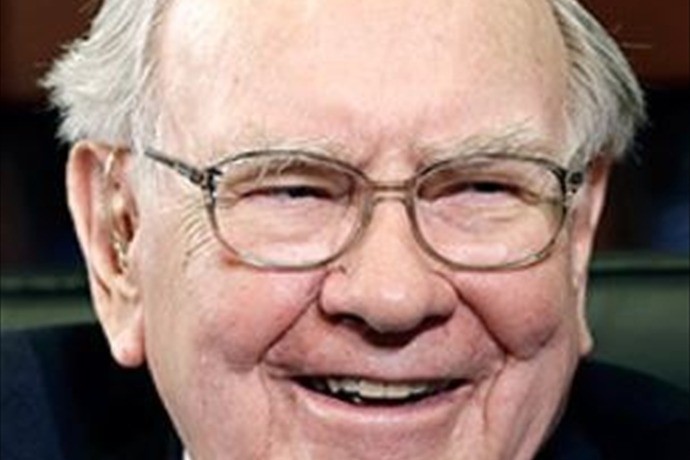The Alternative Warren Buffett (BRKA BRKB)
Post on: 20 Апрель, 2015 No Comment

Writing in the Financial Times in 2008, John Kay put Warren Buffett’s success into simple perspective:
During Mr. Buffett’s tenure at Berkshire Hathaway [ ( NYSE: BRK-A ) ( NYSE: BRK-B ) ], the S&P 500 index has produced an average total return of 10 per cent. That return reinvested over 42 years will multiply your stake 67 times. But if your investments yield twice as much as that — as Mr. Buffett’s have done — your wealth increases not by twice 67, but 67 squared, a factor of 4,500. That arithmetic makes Mr. Buffett the richest man in the world.
I thought about that simple — and startling — math while reading a short article written by Buffett himself this week in Forbes. In it, Buffett writes:
When I got out of college, I had $9,800, but by the end of 1955, I was up to $127,000. I thought, I’ll go back to Omaha, take some college classes, and read a lot — I was going to retire! I figured we could live on $12,000 a year, and off my $127,000 asset base, I could easily make that. I told my wife, Compound interest guarantees I’m going to get rich.
Buffett’s net worth today, according to Forbes. is $44 billion. Some quick math, then: Since 1955, his net worth has compounded at a rate of 25.08% a year.
That got me thinking: What if the skinny kid from Omaha with $127,000 in 1955 didn’t spend the next half-century devoted to stock-picking, business-building, and market-beating? What if Buffett instead did something more traditional with his money, like put it in an index fund, Treasury bonds, gold, or cash? You can imagine a few alternative Buffett scenarios. And like Kay’s statistic, they show how powerful compound interest can be over time.
Scenario one: S&P 500 index fund
Including dividends, $127,000 invested in the S&P (or a re-created equivalent) in 1955 would be worth $31.7 million today, which works out to an annual return of 10.17%. That gives us a good proxy to measure Buffett’s market outperformance: Of his $44 billion net worth, about $43.97 billion came from so-called alpha, or returns in excess of the benchmark.
For more perspective, Bloomberg has a new tool that tracks the daily net worth change of the world’s billionaires. It shows Buffett’s net worth changed by $328 million yesterday alone, or more than 10 times what his entire net worth would be had he invested in the S&P in 1955.
Scenario two: 10-year Treasury bonds
$127,000 put in 10-year Treasuries in 1955 would be worth $3.9 million today, for an average annual return of 6.2%.
For perspective, if Berkshire paid out half its net income as a dividend, Buffett would earn $3.9 million every 27 hours, roughly.
Scenario three: Half stocks, half Treasuries
Split the difference between the first two scenarios, and you get a pretty average American portfolio. How much would $127,000 split between stocks and Treasuries in 1955 be worth today? $17.8 million, for an annual return of about 9% — and $43.98 billion less than Buffett actually earned.
Scenario four: Gold
$127,000 plunked into gold in 1955 would be worth just over $6 million today, the vast majority of which came in the last few years alone. That’s about a day and half of Berkshire’s hypothetical dividend, if you’re keeping track.
Scenario five: Cash under the mattress
$127,000 in cash in 1955 would be worth. $127,000 today. There are a couple of ways to put that in perspective. One, inflation would whittle the amount down to about $15,000 in today’s dollars. Two, a net worth of $127,000 today puts you at exactly the 50th percentile of American households — just barely average.
You might think it’s unreasonable to assume cash is stuffed under a mattress — or some other way to earn a 0% return — but it’s sensationally popular these days. Americans now have over $10 trillion in bank deposits, up $760 billion in the last year alone.
Lesson learned
Now, these figures are rough estimates at best. It’s impossible to know how things like spending and taxes would have actually affected Buffett’s alternative net worth.
What they should demonstrate, however, is how staggeringly powerful even small differences in returns add up over time. You should not expect to earn Buffett-like returns over the next 50 years. In fact, you almost certainly won’t. But the difference in earning 3% a year versus, say, 7% or 9% a year, compounded over a few decades, is no less than life-changing.
When you look at where most new money is going these days — lots going into bonds yielding close to nothing, and little going into stocks that still offer good returns — you see at least one reason why Buffett is abnormally successful: He understands and appreciates the power of compounding returns better than most. That simple arithmetic, as Kay might say, made him the richest man in the world.
Fool contributor Morgan Housel owns shares of Berkshire Hathaway. Follow him on Twitter @ TMFHousel . The Motley Fool owns shares of Berkshire Hathaway. Motley Fool newsletter services have recommended buying shares of Berkshire Hathaway. The Motley Fool has a disclosure policy . We Fools may not all hold the same opinions, but we all believe that considering a diverse range of insights makes us better investors. Try any of our Foolish newsletter services free for 30 days .














